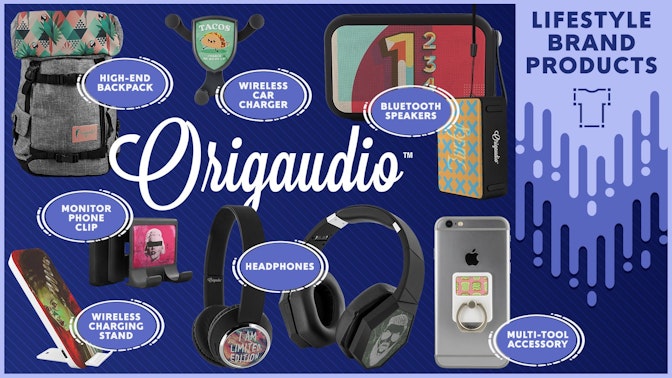Data is incredible.
With it, you can make informed strategic decisions that will pay dividends in the future. Without it, you have to resort to guesswork that may cost you dearly.
Still, not all data is created equal.
Many of the statistics touted online can be, at best, outdated, and, at worst, wildly inaccurate.
What’s more, even when you have relevant, accurate statistics, it can be difficult to quickly extract effective strategic insights.
That’s why we’ve created this article.
In it, you’ll discover the 19 latest ecommerce statistics and the best strategies to take advantage of them in your ecommerce business. Plus, we also provide killer resources to help you implement these strategies today.
Buckle up.



1. It’s estimated that 218.8 million US consumers will shop online in 2023.
That’s a lot of potential customers in the world’s second biggest ecommerce market.
In fact, with an expected population of 335.25 million people, that’s about 65% of the US population shopping online.
→ Click Here to Launch Your Online Business with Shopify
What’s more, online shopping has been rising rapidly over the years and is expected to continue doing so.
The key takeaway: With more and more people shopping online each year, there’s never been a better time to start an online store.
For help, check out: How to Start an Online Business in 2022.
2. In 2023, ecommerce sales are expected to account for 20.8% of retail sales worldwide.
In other words, ecommerce is slowly taking over.
This statistic clearly shows how ecommerce is becoming a more and more important part of global commerce.
It’s growing so quickly that it’s expected to make up a whopping 24% of retail sales worldwide by 2026.
The key takeaway: Ecommerce is expanding in every direction and becoming a more integral part of the consumer experience worldwide.
Once again, this trend offers massive opportunities for new entrepreneurs.
For more help, read: How Much Does it Cost to Start a Dropshipping Store?
3. More than one-third of American small businesses do not have a website.
With so many businesses slow to capitalize on the growing ecommerce industry, this is great news for new and existing ecommerce entrepreneurs.
The key takeaway: Businesses without websites should set up an online store before they’re left in the dust.
Plus, with tools like Shopify, it couldn’t be more simple to set up a website. And if you want to compare some of the biggest providers, check out this list of the best ecommerce platforms.
For more help, check out this video:
4. The number one reason people shop online is free delivery.
Other key reasons include the ability to use coupons and apply discounts (38.1%), read reviews left by other customers (31%), being able to easily return their items (30.1%), and having a quick checkout process (27.8%).
In other words, the strength of ecommerce lies in its convenience.
The key takeaway: Make sure your customer experience is built for convenience.
Shoppers should find the process simple and intuitive. This also means providing fast shipping and hassle-free returns.
To make things even more convenient, instead of trying to entice shoppers to visit your website, take your store to them.
One way to do this is to set up a Facebook shop.
To learn how, read: How to Set Up a Facebook Shop: The Quickstart Guide for Beginners.
5. 28% of US shoppers use mobile phones while in a physical store to look up discounts, compare prices, and read product reviews.
This is great news for ecommerce businesses.
Why?
Without the costs of maintaining a physical store and large inventory, online retailers can keep overheads low.
This means they’re often able to provide lower prices for customers.
So how can ecommerce entrepreneurs take advantage of in-store shoppers comparing prices online? Advertise your products where shoppers who look up discounts and price comparisons will see them.
The key takeaway Get your products to appear in Google Shopping’s search results. Remember, Google is by far the largest search engine and many shoppers will use it to quickly search discounts and compare prices.
To learn how, check out: The Beginner’s Guide to Boosting Sales With Google Shopping Ads.
6. 81% of consumers conduct online research before making a purchase online.
Remember, the ability to research purchases is one of the key reasons people shop online instead of in-store.
The key takeaway: Provide shoppers with detailed and accurate product pages that answer any and every question shoppers may have.
Your product pages should have plenty of high-quality product images, descriptions, and specifications.
This will instill trust and help shoppers with their research.
For more help, read: How to Create a Great Product Page.
7. 30% of consumers say influencer recommendations are one of the key factors in their purchasing decisions.
It seems the tide has turned.
Just a year ago, consumers trusted recommendations from friends and family more than those from influencers. But now, just 27% report the former’s recommendation as an important factor in their buying decisions.
It makes sense: Influencers are often regarded as experts in their niche. So if a person follows a fitness influencer, it's safe to assume he or she knows more about fitness than most of their friends.
The key takeaway: Harness the power of influencers to increase sales.
Thankfully, there are numerous ways businesses can take advantage of influencers. For example, you can host a social media takeover or do giveaways with the influencer to boost revenues.
To learn more, read: Influencer Marketing: A Comprehensive Guide.
8. 76% of people will stop doing business with a company after only two poor customer experiences.
Trust is hard to build and easy to lose.
After being let down by a business, it’s understandable that consumers would be hesitant to buy from them again.
Left unchecked, providing a poor customer experience will be the death of any business. However, retaining customers over time can lead to huge business growth driven by repeat purchases.
The key takeaway: Ensure you provide your customers with a stellar customer experience from start to finish.
Done right, customers should stick around and continue purchasing from your business.
To learn how, check out: Customer Retention: 10 Tips to Keep Your Customers Coming Back.
9. 83% of consumers factor in customer service quality when deciding what to buy.
Customer service is vital to today’s shoppers.
Think about it: without good customer service, people are likely to get frustrated, because they won’t have their issues resolved.
The key takeaway: Build strong relationships with your customers and make hands-on customer service a priority.
And ensure customer service representatives are easily accessible.
Good customer service creates trust. In turn, this will help to increase conversions and customer retention.
To learn more, read: 6 Tips for Successful Ecommerce Customer Service.
10. On average, only 1.62% of ecommerce website visits convert into a purchase.
Roughly speaking, this means that only one or two people in 100 website visitors actually buy something.
That’s a lot of missed opportunities.
If you have a store converting at 2%, simply increasing conversions to just 4% will double your sales.
In other words, a small increase in your online store’s conversion rate can massively increase profits.
The key takeaway: Pay close attention to your website’s conversion rate and consistently work to increase it.
Thankfully, there are tons of ways you can do this.
To learn more, check out: Why Nobody Is Buying From Your Store—And What You Can Do About It and Help! I Have Lots of “Add to Carts” But No Conversions.
11. 80% of shopping carts are abandoned.
This sucks.
It may have taken you weeks of Facebook advertising and retargeting to entice these people to your website.
Perhaps you spent ages choosing the right products and optimizing your product pages to convince your visitors to decide to purchase from your store—and they want to!
They even add a product to their shopping cart … only for two-thirds of them to click away because, you know, they experienced friction.
The key takeaway: Optimize your checkout process to reduce as many of those abandoned carts as possible.
To learn more, read: How to Recover Abandoned Carts.
12. High extra costs are the top reason shoppers abandon carts.
Can you blame them?
They’ve done their research and decided to purchase your product. After going through the entire checkout process, they’re confronted with a bunch of extra costs for shipping and taxes.
Complicated checkout processes and forcing customers to create accounts are also huge turn-offs.
Sure, it might be tempting to reduce your prices to entice customers to buy, and then increase your shipping fees to make up for it. But this could lead to shoppers abandoning their carts.
The Key Takeaway: Don’t hit shoppers with unexpected fees during the checkout process or force them to create accounts. Make the checkout process short, fast, and easy.
You might even want to consider raising your prices slightly and offering free shipping.
To learn more, read: Should You Offer Free Shipping?
13. Abandoned cart follow-up emails have an average open rate of 45%.
This is extremely high.
In comparison, according to Campaign Monitor, the average email open rate is just 18%.
This makes sense when you consider the high level of buyer intent shoppers have when they add products to their cart.
The key takeaway: Make sure you have an email campaign to automatically follow up on abandoned carts. This can make a huge difference to your bottom line.
To learn more, check out: 6 Vital Email Templates Every Online Business Should Steal.
14. On average, 52% of ecommerce sites have omnichannel capabilities.
Today, most businesses are multichannel.
This means they sell to and communicate with customers through multiple channels. For example, you might have a website, Facebook shop, Instagram account, and an email list.
Omnichannel is the next level up—and it’s the future of ecommerce.
This strategy involves not only having multiple channels but integrating them seamlessly and tracking individual customer interactions across the channels.
For this reason, the strategy requires organization and the integration of new technologies.
But, it’s tremendously powerful.
Omnichannel allows you to optimize your communications with potential customers to nurture them through the sales funnel, however they come into contact with your business.
The key takeaway: Businesses that can create a seamless, personalized omnichannel experience for customers will own the future of commerce.
Learn more by reading: Omnichannel Explained: Why You Need It and 3 Killer Examples.
15. B2C ecommerce marketplaces are estimated to generate $3.5 trillion in sales by 2024.
These marketplaces have brand appeal.
Plus, many people already have existing accounts on large ecommerce marketplaces that they know and trust.
The key takeaway: Ecommerce brands must work hard to capture the attention of these shoppers, inspire them to visit their website, and then build trust.
To learn how to capture the attention of consumers, read: How to Create a Killer Facebook Ad Design for Your Ecommerce Store.
And to effectively build trust, check out: 9 Ways to Boost Sales by Making Your Store More Trustworthy.
16. Mobile ecommerce is expected to account for 42.9% of ecommerce sales by 2024.
So it’s likely a good portion of your customers will be accessing your website from a mobile device.
What’s more, annual mobile ecommerce sales in the US are projected to grow from $284 billion in 2020 to $488 billion in 2024.
The key takeaway: Ensure your website is optimized for mobile devices.
Thankfully, these days, most website themes come optimized for mobile. Still, it’s important to choose a theme that works particularly well on mobile devices.
Plus, you should make sure to view your website on different types of devices to ensure it looks great however shoppers access it.
To learn more, read: The Ultimate Guide to Mobile Commerce.
17. 40% of users who have a negative experience on a brand's mobile website will go to its competitor.
This ecommerce statistic hammers home how important mobile commerce is.
The Key Takeaway: For the sake of customer retention, it’s vital you provide a fantastic mobile shopping experience.
18. Longer mobile page load times drastically increase bounces.
In fact, the probability of a user bouncing off a mobile webpage increases by 32% when the page takes between one and three seconds to load (compared to pages that load in less than one second).
The longer the load time, the higher the bounce rate.
Speed matters—people won’t wait around if your website is slow to load.
The key takeaway: Ensure your website loads fast—super fast.
One of the easiest and most effective ways to do this is to decrease the size of the image files on your webpage.
To find out how, check out: Shopify’s Free Online Image Resizer.
19. Younger people shop online more than older people.
Specifically:
- 20.2% of online shoppers in the US are aged 25 to 34.
- The biggest group of digital buyers is millennials.
- Just 14.4% of people who shop online in the US are 65 years old and above.
This isn’t particularly surprising. However, it’s worth noting that different demographics interact with online commerce differently.
The key takeaway: It’s extremely important to have a clearly defined target market.
This will allow you to tailor every aspect of your customer experience to the needs and preferences of your ideal customers.
To learn more, read: Why You Desperately Need a Defined Target Market and Target Audience.
Use these ecommerce statistics to fuel your business growth
When applied, the strategic takeaways from these 19 ecommerce statistics have the power to supercharge your online business.
Here’s a quick summary of those strategic insights:
- There’s never been a better time to start an online store.
- Offer ecommerce options to cater to the consumer experience.
- Businesses without websites should set up an online store as soon as possible.
- Optimize your customer experience for convenience—one way you can do this is to set up a Facebook shop.
- Advertise your products with Google Shopping so shoppers looking up price comparisons will see them.
- Create great product pages that are detailed, accurate, and answer every question shoppers might have.
- Harness the power of influencers to build trust and increase sales.
- Boost customer retention by providing a stellar customer experience.
- Build strong relationships with customers and make hands-on customer service a priority.
- Consistently seek to improve your website’s conversion rate.
- Optimize your checkout process to reduce abandoned carts.
- Avoid springing high fees on customers during the checkout process and consider offering free shipping.
- Create an email campaign to automatically follow up abandoned carts.
- Look to create a seamless, personalized omnichannel experience for customers.
- Optimize your website to instill trust in visitors quickly.
- Choose a great website theme that’s optimized for mobile devices.
- Provide a great mobile experience to boost customer retention.
- Resize your images to improve your website’s load speed.
- Define a clear target market to cater to.
Which key takeaway has been most useful to you? Let us know in the comments below.






